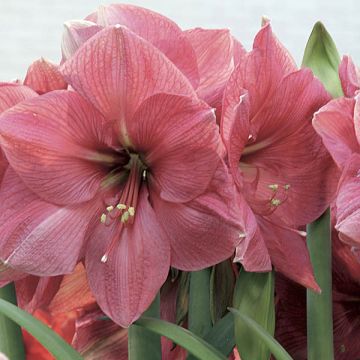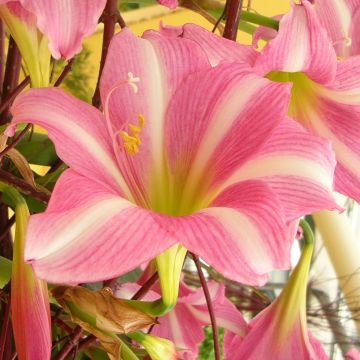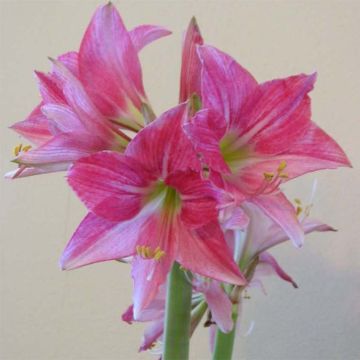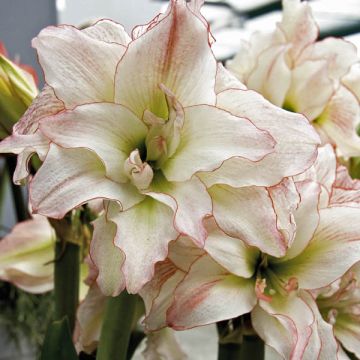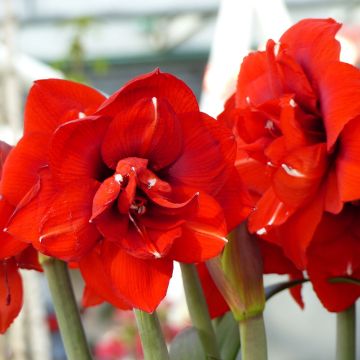Shipping country and language
Your country of residence may be:
Your country of residence is:
For a better user experience on our website, you can select:
Your shipping country:
-
Andorra
-
Austria
-
Belgium
-
Bulgaria
-
Canada
-
Chile
-
Croatia
-
Cyprus
-
Czechia
-
Denmark
-
Estonia
-
Finland
-
France
-
Germany
-
Greece
-
Hungary
-
Iceland
-
Ireland
-
Italy
-
Latvia
-
Lithuania
-
Luxembourg
-
Malta
-
Monaco
-
Netherlands
-
Poland
-
Portugal
-
Romania
-
Slovakia
-
Slovenia
-
Spain
-
Sweden
-
Switzerland
-
United Kingdom
We only deliver seed and bulb products to your country. If you add other products to your basket, they cannot be shipped.
Language:
-
French
-
German
-
Spanish
-
English
-
Italian
My Account
Hello
My wish lists
Log in / Register
Existing customer?
New customer?
Create an account to track your orders, access our customer service and, if you wish, make the most of our upcoming offers.


Hippeastrum Gervase - Amaryllis
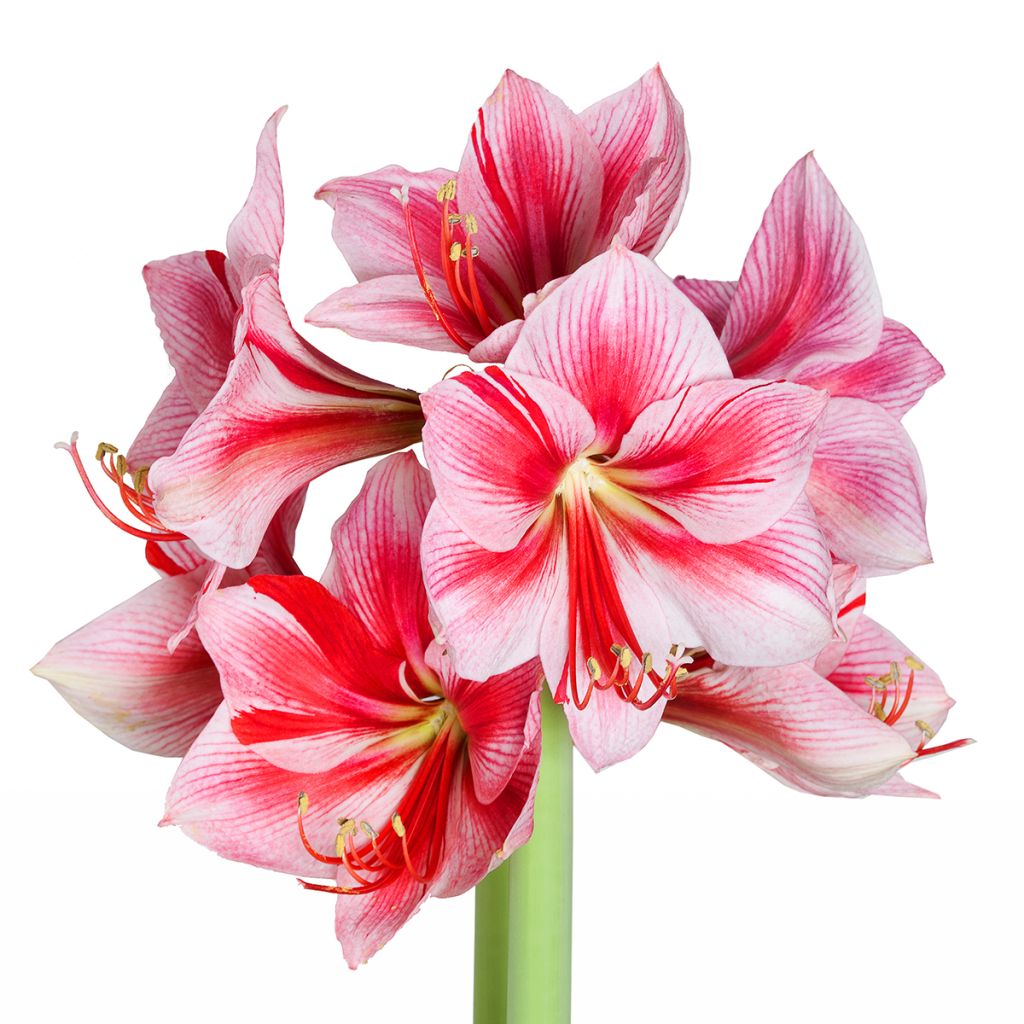

Hippeastrum Gervase - Amaryllis
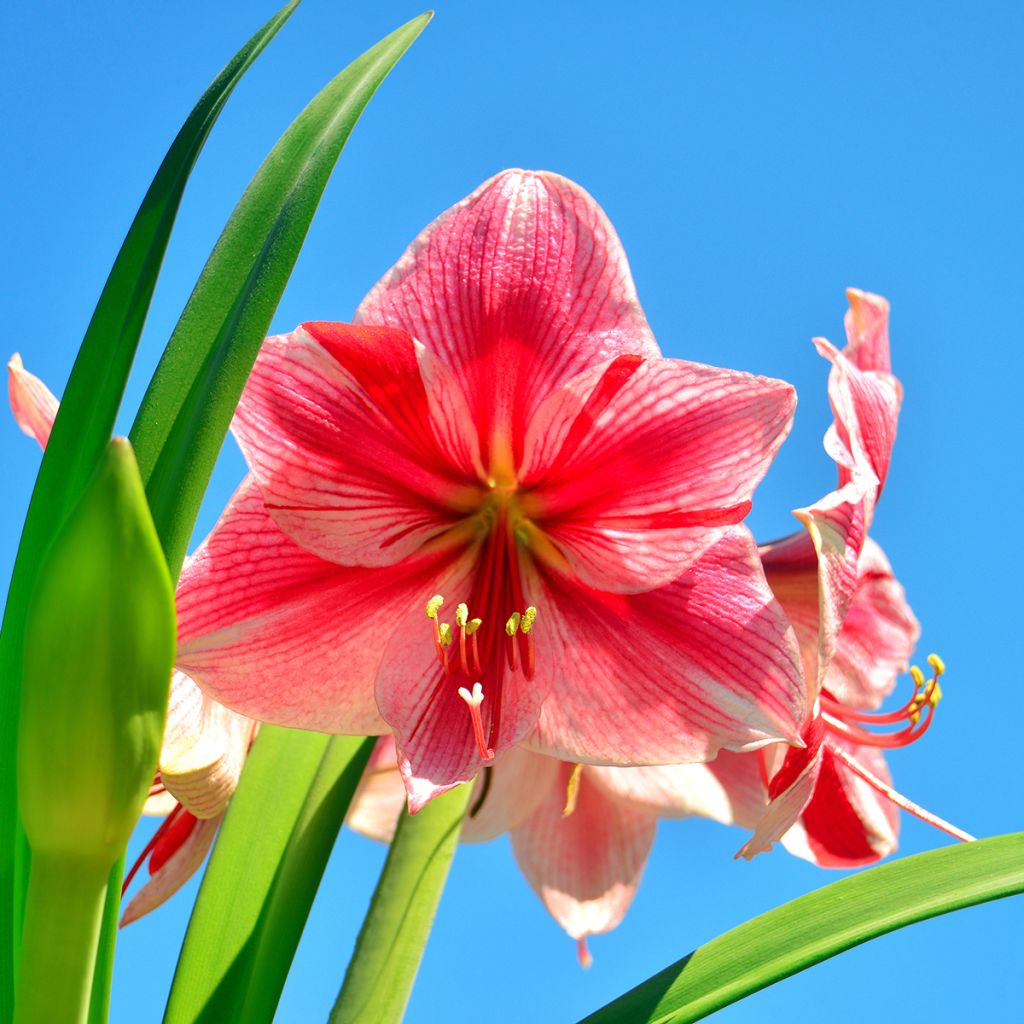

Hippeastrum Gervase - Amaryllis
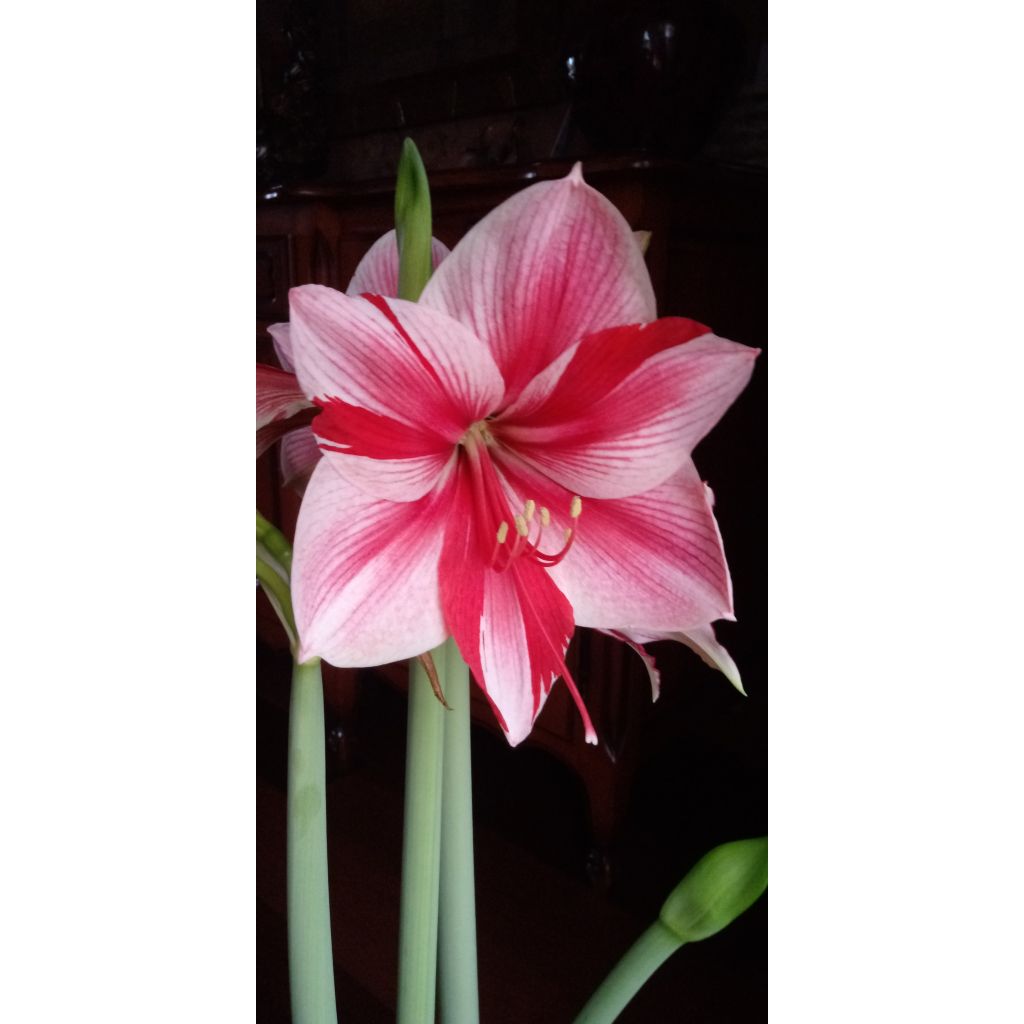

Hippeastrum Gervase - Amaryllis


Hippeastrum Gervase - Amaryllis


Hippeastrum Gervase - Amaryllis
Hippeastrum Gervase - Amaryllis
Hippeastrum Gervase
Amaryllis, Knight's-star-lily
Fast delivery as soon as the bulbs are available. Arrived in very good condition, very well packaged. Bulbs are very large, which is a guarantee of beautiful flowering. We will see the flowering in the early next year, but I am confident.
Yann, 21/10/2020
Why not try an alternative variety in stock?
View all →Order in the next for dispatch today!
Dispatch by letter from €3.90.
Delivery charge from €5.90 Oversize package delivery charge from €6.90.
More information
This item is not available in your country.
Schedule delivery date,
and select date in basket
This plant carries a 6 months recovery warranty
More information
We guarantee the quality of our plants for a full growing cycle, and will replace at our expense any plant that fails to recover under normal climatic and planting conditions.
From €5.90 for pickup delivery and €6.90 for home delivery
Express home delivery from €8.90.

Does this plant fit my garden?
Set up your Plantfit profile →
Description
Amaryllis or Hippeastrum Gervase is a bulbous plant intended for indoor cultivation that offers amazing flowers with magenta-pink petals, striped with pink or red stripes: a touch of exoticism in the heart of winter.
Belonging to the Amaryllidaceae family and originating from the tropical and subtropical regions of Central and South America, Hippeastrum is not at all hardy, its cultivation outdoors is not possible in our climate. Enjoy it even when planted in the warmth of the house, while the garden is still asleep.
Amaryllis is a plant with large bulbs whose large and elegant flowers resemble those of the Lily. They are generally grouped in fours at the top of a strong main stem, 30 to 50 cm (12 to 20in) high and adorned with long green leaves, in narrow strips.
Its flowering occurs from December to April, 6 to 8 weeks after planting. It depends on the temperature of the room in which the Amaryllis is planted: always in a well-lit place, keep the pot in a well-heated room to accelerate its flowering or in a cooler room, around 10 °C, to slow it down.
Did you know? The Latin name 'Amaryllis' was the subject of heated discussions among botanists: originally, this name actually referred to another plant, similar in appearance and native to South Africa: the Amaryllis belladonna. When Carl von Linne used this name to refer to it but also to refer to the Hippeastrum (are you still following?), there was an outcry and the battle raged on until 1987 when the botanists decided: the Latin name Amaryllis is preserved for the African species Belladona but should no longer be used as the Latin name for Hippeastrum.
Report an error about the product description
Hippeastrum Gervase - Amaryllis in pictures
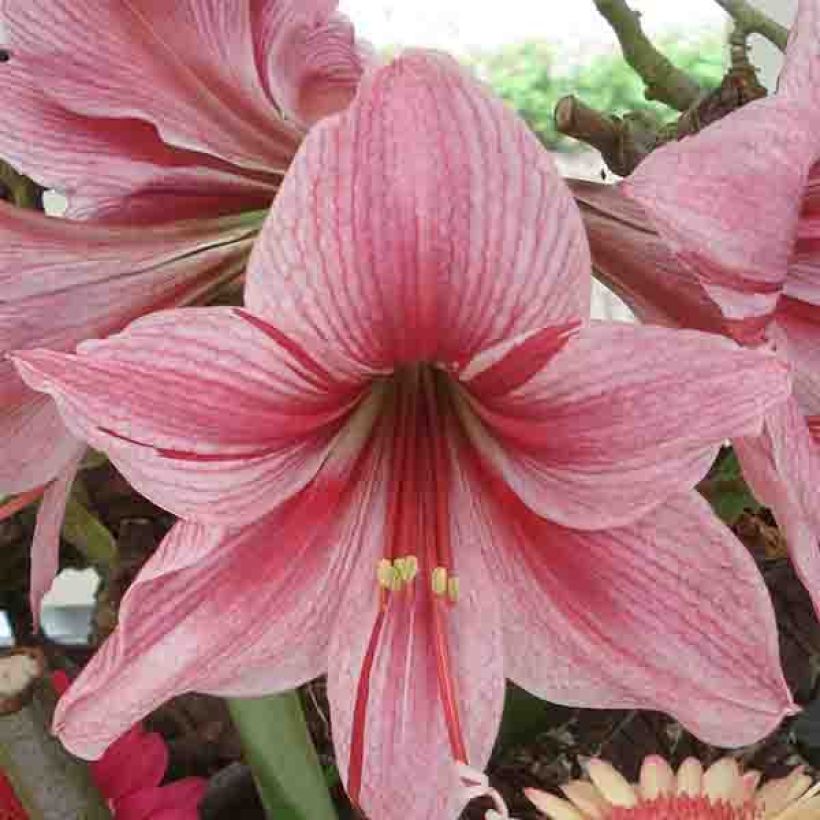

Plant habit
Flowering
Foliage
Botanical data
Hippeastrum
Gervase
Amaryllidaceae
Amaryllis, Knight's-star-lily
Cultivar or hybrid
Other Hippeastrum - Amaryllis
Planting and care
How to plant my Amaryllis? You can plant Amaryllis bulbs from October to the end of April. Choose a pot that is not too big,1-2cm (1in) larger than the size of the bulb. Place a layer of drainage at the bottom. Mix half potting compost, half garden soil. Only bury the bulb halfway. Place the pot in a warm and bright location. Water sparingly until the stem appears. Then water daily. 6 to 8 weeks later, your bulbs will flower. Our advice: if you choose multiple bulbs, plant them with a two-week interval to enjoy the beauty of Amaryllis all winter.
How to make my Amaryllis flower again? After flowering, remove the faded flowers and let the leaves develop. Continue to water regularly and give them indoor plant fertiliser every 15 days. This is when the bulb replenishes itself to prepare for next year's flowers. After 4 to 6 months, forget about your potted plants, let them rest for about 3 months in a sheltered place. You can then remove the faded leaves, repot in fresh soil, and start a new growing cycle.
Planting period
Intended location
Care
-
, onOrder confirmed
Reply from on Promesse de fleurs
Haven't found what you were looking for?
Hardiness is the lowest winter temperature a plant can endure without suffering serious damage or even dying. However, hardiness is affected by location (a sheltered area, such as a patio), protection (winter cover) and soil type (hardiness is improved by well-drained soil).

Photo Sharing Terms & Conditions
In order to encourage gardeners to interact and share their experiences, Promesse de fleurs offers various media enabling content to be uploaded onto its Site - in particular via the ‘Photo sharing’ module.
The User agrees to refrain from:
- Posting any content that is illegal, prejudicial, insulting, racist, inciteful to hatred, revisionist, contrary to public decency, that infringes on privacy or on the privacy rights of third parties, in particular the publicity rights of persons and goods, intellectual property rights, or the right to privacy.
- Submitting content on behalf of a third party;
- Impersonate the identity of a third party and/or publish any personal information about a third party;
In general, the User undertakes to refrain from any unethical behaviour.
All Content (in particular text, comments, files, images, photos, videos, creative works, etc.), which may be subject to property or intellectual property rights, image or other private rights, shall remain the property of the User, subject to the limited rights granted by the terms of the licence granted by Promesse de fleurs as stated below. Users are at liberty to publish or not to publish such Content on the Site, notably via the ‘Photo Sharing’ facility, and accept that this Content shall be made public and freely accessible, notably on the Internet.
Users further acknowledge, undertake to have ,and guarantee that they hold all necessary rights and permissions to publish such material on the Site, in particular with regard to the legislation in force pertaining to any privacy, property, intellectual property, image, or contractual rights, or rights of any other nature. By publishing such Content on the Site, Users acknowledge accepting full liability as publishers of the Content within the meaning of the law, and grant Promesse de fleurs, free of charge, an inclusive, worldwide licence for the said Content for the entire duration of its publication, including all reproduction, representation, up/downloading, displaying, performing, transmission, and storage rights.
Users also grant permission for their name to be linked to the Content and accept that this link may not always be made available.
By engaging in posting material, Users consent to their Content becoming automatically accessible on the Internet, in particular on other sites and/or blogs and/or web pages of the Promesse de fleurs site, including in particular social pages and the Promesse de fleurs catalogue.
Users may secure the removal of entrusted content free of charge by issuing a simple request via our contact form.
The flowering period indicated on our website applies to countries and regions located in USDA zone 8 (France, the United Kingdom, Ireland, the Netherlands, etc.)
It will vary according to where you live:
- In zones 9 to 10 (Italy, Spain, Greece, etc.), flowering will occur about 2 to 4 weeks earlier.
- In zones 6 to 7 (Germany, Poland, Slovenia, and lower mountainous regions), flowering will be delayed by 2 to 3 weeks.
- In zone 5 (Central Europe, Scandinavia), blooming will be delayed by 3 to 5 weeks.
In temperate climates, pruning of spring-flowering shrubs (forsythia, spireas, etc.) should be done just after flowering.
Pruning of summer-flowering shrubs (Indian Lilac, Perovskia, etc.) can be done in winter or spring.
In cold regions as well as with frost-sensitive plants, avoid pruning too early when severe frosts may still occur.
The planting period indicated on our website applies to countries and regions located in USDA zone 8 (France, United Kingdom, Ireland, Netherlands).
It will vary according to where you live:
- In Mediterranean zones (Marseille, Madrid, Milan, etc.), autumn and winter are the best planting periods.
- In continental zones (Strasbourg, Munich, Vienna, etc.), delay planting by 2 to 3 weeks in spring and bring it forward by 2 to 4 weeks in autumn.
- In mountainous regions (the Alps, Pyrenees, Carpathians, etc.), it is best to plant in late spring (May-June) or late summer (August-September).
The harvesting period indicated on our website applies to countries and regions in USDA zone 8 (France, England, Ireland, the Netherlands).
In colder areas (Scandinavia, Poland, Austria...) fruit and vegetable harvests are likely to be delayed by 3-4 weeks.
In warmer areas (Italy, Spain, Greece, etc.), harvesting will probably take place earlier, depending on weather conditions.
The sowing periods indicated on our website apply to countries and regions within USDA Zone 8 (France, UK, Ireland, Netherlands).
In colder areas (Scandinavia, Poland, Austria...), delay any outdoor sowing by 3-4 weeks, or sow under glass.
In warmer climes (Italy, Spain, Greece, etc.), bring outdoor sowing forward by a few weeks.

